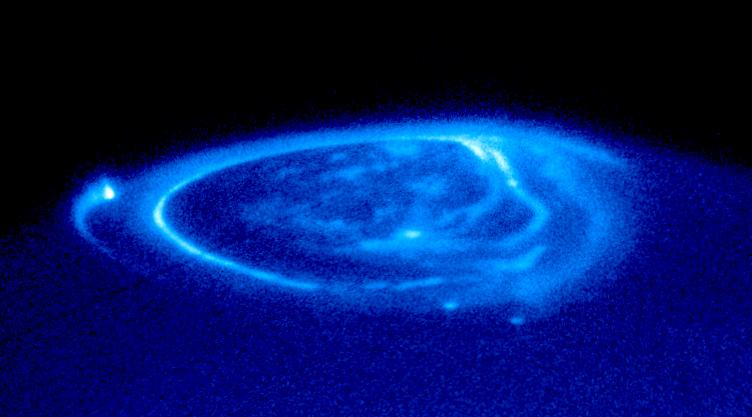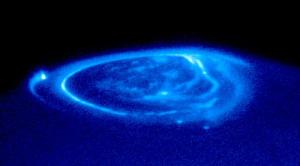
Jupiter’s North Pole Aurora
The Hubble Space Telescope captured this close-up view of an electric-blue aurora eerily glowing one-half billion miles away on the giant planet Jupiter. Auroras are curtains of light resulting from high-energy electrons racing along the planet's magnetic field into the upper atmosphere. The electrons excite atmospheric gases, causing them to glow. The image shows the main oval of the aurora, which is centered on the magnetic north pole, plus more diffuse emissions inside the polar cap. Though the aurora resembles the same phenomenon that crowns Earth's polar regions, the Hubble image shows unique emissions from the magnetic "footprints" of three of Jupiter's largest moons. (These points are reached by following Jupiter's magnetic field from each moon down to the planet). Auroral footprints can be seen in this image from Io (along the left limb), Ganymede (near the center), and Europa (just below and to the right of Ganymede's auroral footprint). These emissions, produced by electric currents generated by the moons, flow along Jupiter's magnetic field, bouncing in and out of the upper atmosphere. They are unlike anything seen on Earth. For more information, visit: hubblesite.org/news_release/news/2000-38
- X






















